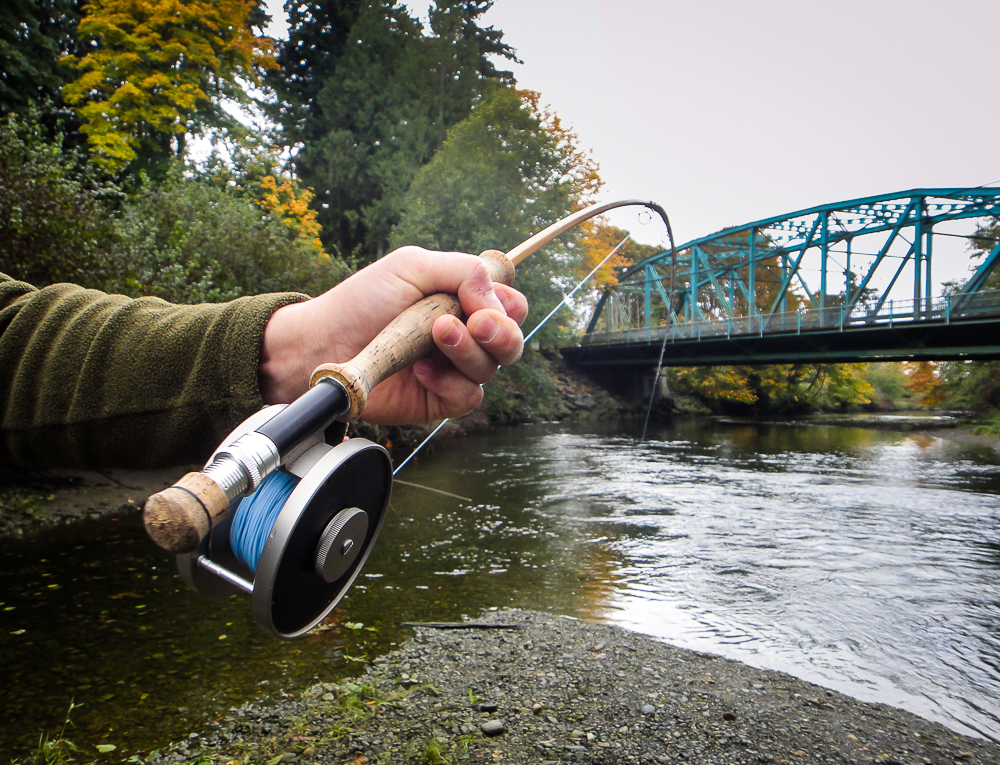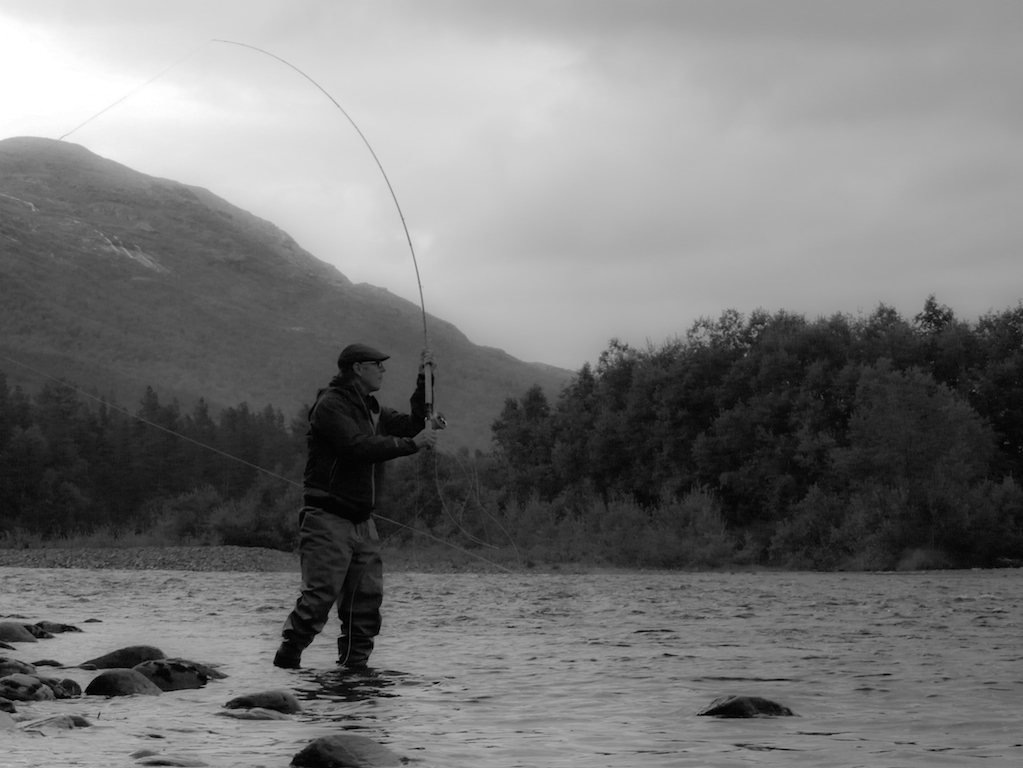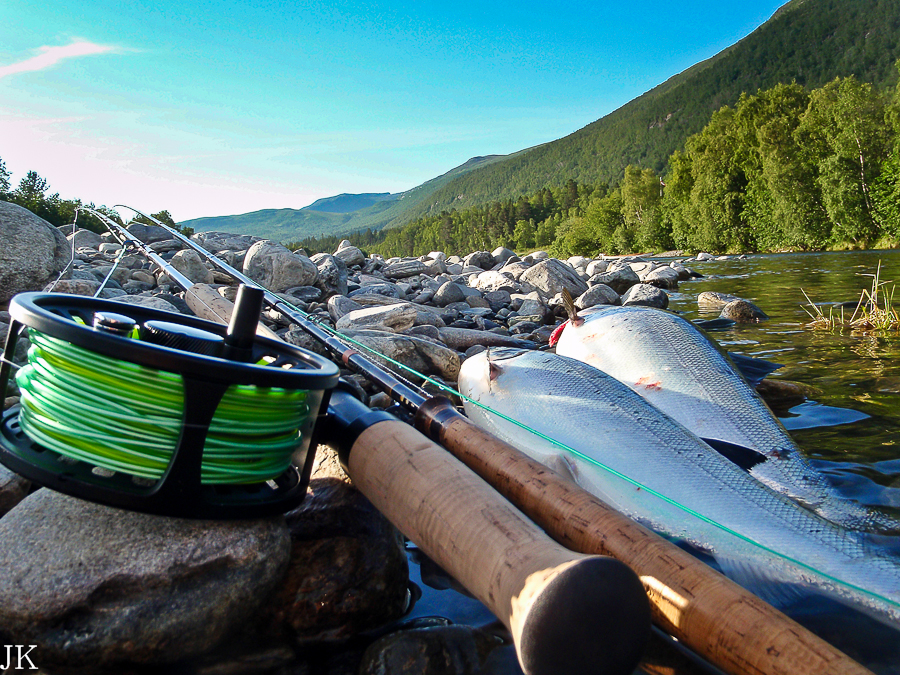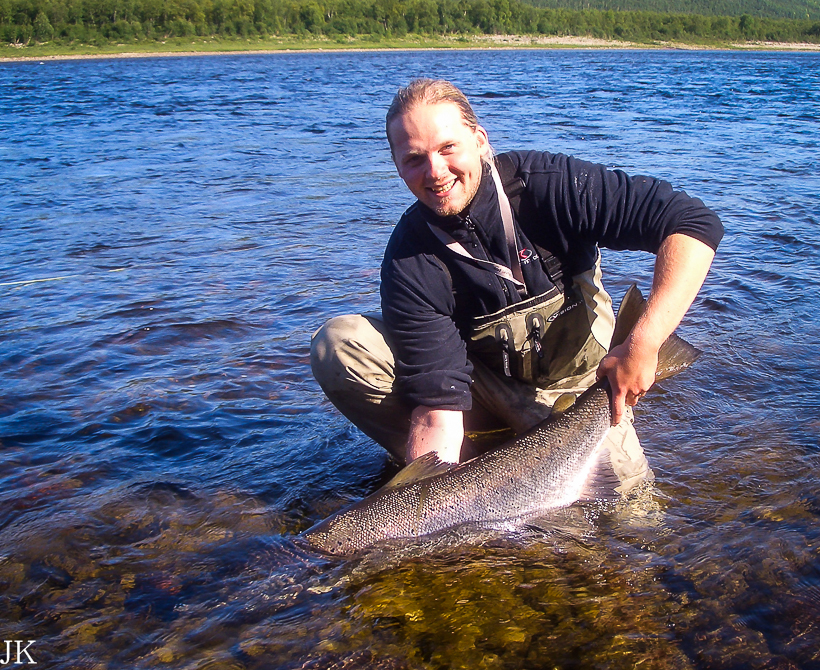
The sentence on the headline was said to me by a great teacher and friend on one of my first saltwater trips and it has ever since echoed in my head when I’m playing a fish.
Even though there is a big difference in fishing for saltwater predators like Tuna, Tarpon or Sailfish to fishing on the river for salmonids, the same basic laws of physics apply for salmon too.
If you’re in the gym riding an exercise bike and turn more resistance on it, you will tire faster than if you just let the bike run free, right? The same thing works with fish. If you apply steady resistance on a fish it will tire a lot quicker to get your hands on it then without resistance. A no brainer, right? The emphasis is on steady pressure. Don’t jerk around, it will only lead to pissed off fish and broken leaders.
So, how much is enough pressure and how do you apply it? Setting your drag on your reel is the number one thing to do. A good drag setting for different salmon species on a river is something between 800 grams to 3 kilograms. 3 kilograms being a pretty extreme setting on a river as bad things usually start to happen when you’re hitting that magic number. I am not personally comfortable using reels that have less than 2,5 kg of drag even for river fishing. A quality reel with a good drag is just so nice to use and a powerful tool to fight a fish!

If you’re fishing with small flies and thin leaders you are limited to the lower end of the drag spectrum. Also smaller fish like Atlantic salmon grilse and pink salmon have a very soft, small mouth that does not take a lot of force to rip. If you’re using thick leaders and strong hooks you can pump up the volume. Remember to set the drag tight enough right away. Don’t let the fish run that first crucial run on a light drag and take an excessive amount of line on the water. A “dog” is always easiest to walk on a short leash.



Also things like rod angle affect the resistance and depending on which line you use the friction from the rod guides. Don’t overdo it but remember to put the brakes on them, especially if you are releasing the fish. Nothing more of a sad sight than watching a fish “drowned” to its last breath and then trying to revive it. Much rather lose a fish mid fight then kill it unintentionally on a prolonged fight. When compared to saltwater, fighting a salmon on the river is not as straight forward. Positioning yourself on the river bank and playing in different kind of currents give the fight a different tone. But still, I urge you to put some heat on the fish. It has worked wonders for my landing percentage, even though I’m not that bothered with things like that anymore. The important thing is to return the fish in its prime back to the river (that is, if it’s not going to the smoker) and to have fun in the progress. Even though many, especially in the Atlantic salmon fishing world don’t believe in it, putting some break on those suckers have worked for me on all 5 species of Pacific Salmon, Steelhead and of course the mighty Atlantic Salmon. Not to mention all the saltwater species that I’ve fished for. Not saying it will necessarily do it for you, but give it a try…
Have fun and catch a big one!















